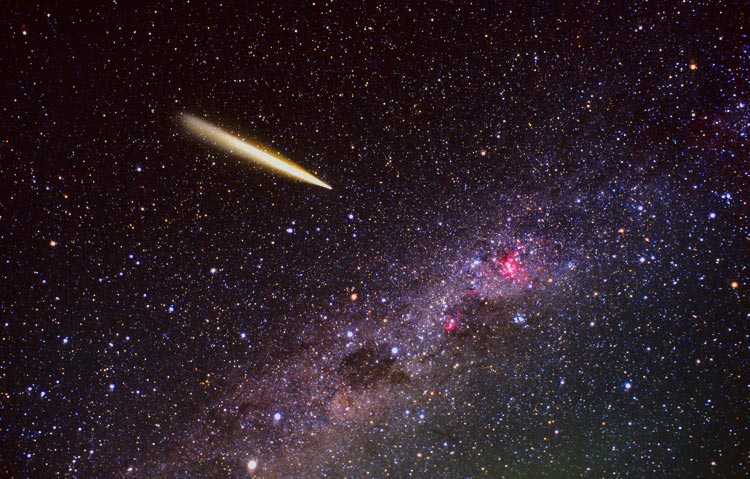By now, you may have heard (via Pharyngula, or Sandwalk, or the New York Times) about Marcus Ross, who was recently granted a Ph.D. in geosciences by the University of Rhode Island. To earn that degree, he wrote a dissertation (which his dissertation advisor described as "impeccable") about the abundance and spread of marine reptiles called mosasaurs which disappeared about 65 million years ago.
Curiously, the newly-minted Dr. Ross is open about his view that the Earth is at most 10,000 years old.
There have been interesting discussions in the comments on the linked posts about what precisely a Ph.D. signifies (that you have completed coursework and banged out a defensible piece of research, or that you are fit to enter a holy society of scientists?), about whether science is primarily concerned with facts or methodologies, about whether it is possible simultaneously to hold contradictory ideas in your head. Because those discussions are happening elsewhere, I don't want to replicate them here.
Rather, I'd like to examine whether it would be possible for someone like Marcus Ross -- a self-professed Young Earth Creationist (YEC) -- to write a doctoral dissertation in geosciences that is both "impeccable" in the scientific case it presents and intellectually honest.
I take it that the main worry about Dr. Ross's dissertation is that what he wrote was some distance from his actual views. Larry Moran writes:
Ross did not discuss his YEC beliefs in his thesis, Instead, he wrote his thesis as though he believed in an Earth that was billions of years old and as though species evolved and went extinct over periods of millions of years. In other words, Ross did not tell the truth about his true "scientific" beliefs when he wrote his thesis. I assume that he also didn't discuss his true beliefs during the Ph.D. oral exam when his examining committee questioned him on his thesis work, including his interpretation and its implications. ... The Ross case gets complicated because he did not do what any honest scientist should do and defend his "scientific" opinion in public. There's nothing in his thesis about Young Earth Creationism. However, his real views were well known because he had been consorting with Young Earth Creationists for some time. ...
In this situation we have an example of someone who carefully hid his true belief from the thesis committee, or at least went out of his way to give them an excuse to avoid facing up to the main problem. This is deceptive and antithetical to how science is supposed to operate ... It opens a whole other can of worms. While most of us would agree that openly advocating a young Earth in your thesis would be grounds for failure, we couldn't fail someone who effectively lied about his "scientific" opinion. We put our faith in honesty and scientific integrity whenever possible. It's the default assumption.
If Ross wrote a dissertation that asserts something that he then disavowed elsewhere (and in such a short interval of time that clearly he must not have believed it when he asserted it in the dissertation or in his defense of it), that looks like lying. One might wonder how big a leap it is to go from, "These critters lived in these places until they went extinct about 65 million years ago (although actually they can't have lived that long ago since the Earth was created much more recently than that)" to "Here's the data from the isotope-dating of the fossils I found in these locations (although actually I didn't find any fossils so I just made the data up)." My suspicion is that Ross would not cross the line of actually making up data; what is the principled difference between crossing that line and making assertions that one does not believe?
One possibility is that Ross saw his dissertation as an exercise in presenting the inferences one could draw from the available data using the recognized methods of geoscience. In other words, here's what we would conclude if all the assumptions about the age of the earth, deposition of fossils, isotope dating methods, etc., were true. Given Ross's YEC, he presumably has reason to think at least some of these scientific assumptions are false. (They are religious reasons, not scientific reasons. If there were scientific reasons to doubt these assumptions, it seems like examining those could only lead to a stronger body of knowledge in geosciences, and that Ross could have made such an examination the focus of his doctoral research.)
Is it an obligation for a scientist who has concerns about the goodness of an assumption on which people in his field rest their inferences to voice that concern? Is it an obligation for that scientist to gather data to test that hypothesis, or to work out an alternative hypothesis that is better supported by the data? Or is it OK to keep your doubts to your self and just use the inferential machinery everyone else is using?
A shorter way of asking the same question: Does intellectual honesty in science just cover the way you use the inferential structure and the inputs (i.e., data) from which you draw your inferences? Or does it require disclosure of which assumptions you really accept when drawing your inferences and which you are inclined to think are mistaken?
Does intellectual honesty require that you disclose as well the fact that you don't actually accept this inferential structure as a good way to build knowledge?
reposted from: Scienceblogs - and see this page for comments
my highlights / emphasis / comments























